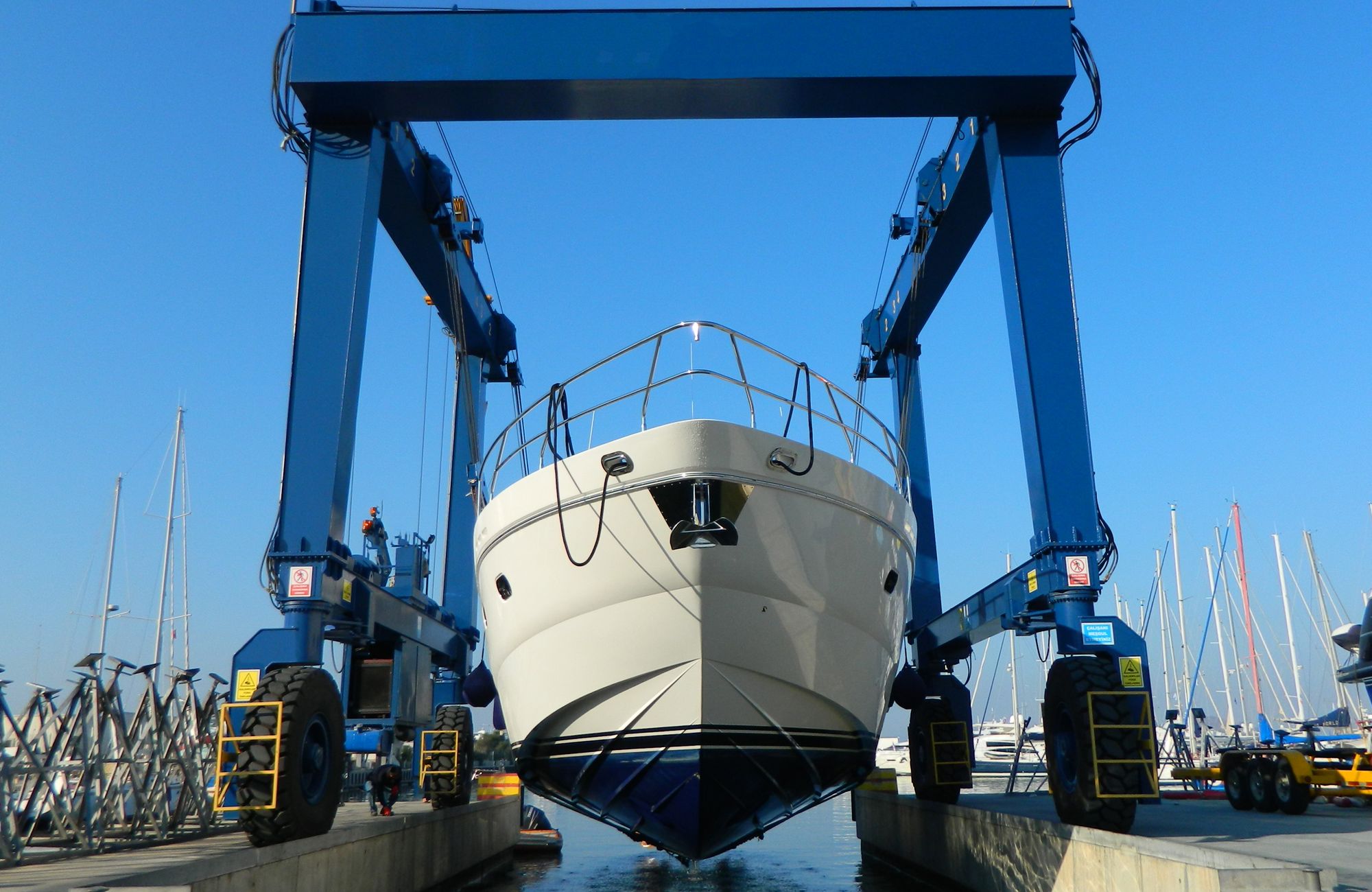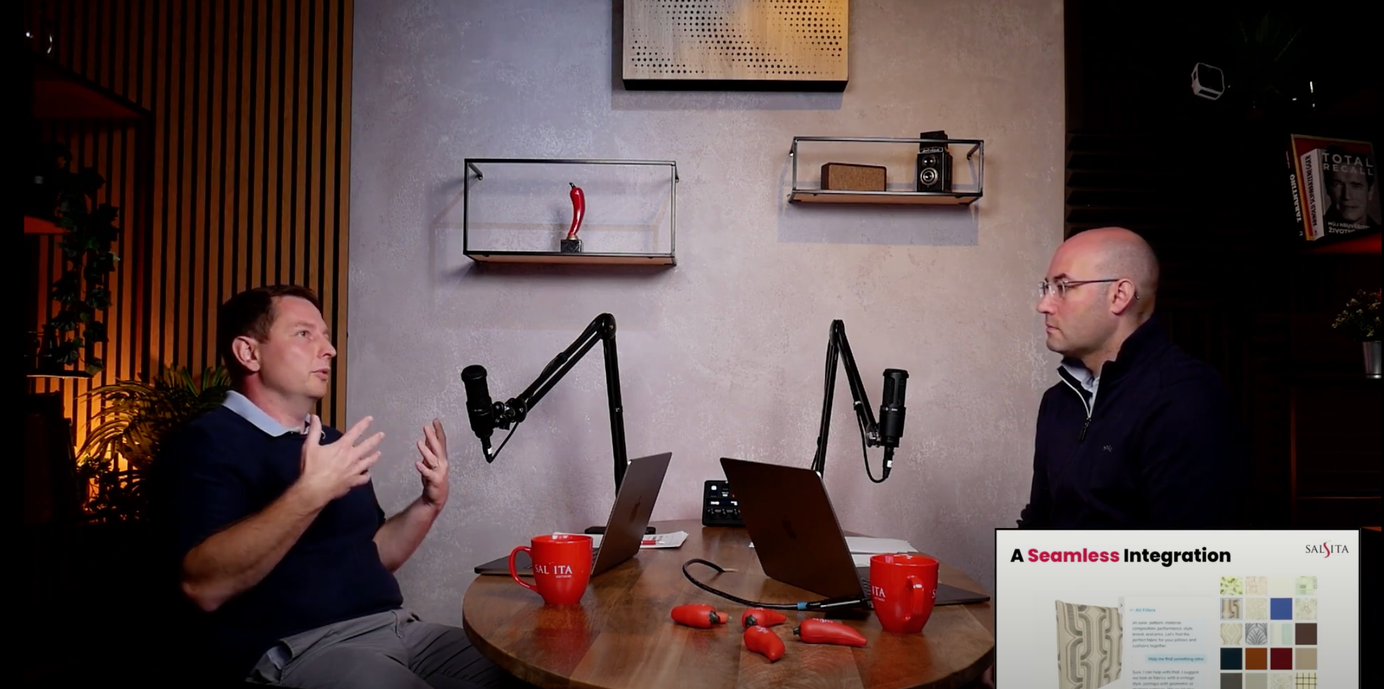
Crafting the Perfect Wave: The Evolution of Personal Watercraft Design
Discover the fascinating evolution of personal watercraft (PWC) design in our latest article. From early innovations to eco-friendly futures, explore how design shapes the PWC experience.
Table of Contents
Personal watercraft (PWCs) have come a long way since their humble beginnings in the 1960s. The first PWCs were essentially jet skis, with simple designs and limited performance. However, thanks to technological advancements and changing consumer preferences, PWCs have evolved into sophisticated machines that offer unparalleled performance, comfort, and safety.
What is a personal watercraft (PWC)? And Why is PWC design important?
A personal watercraft (PWC) is a small, recreational boat that is typically powered by a jet drive engine. PWCs are also known as jet skis, water scooters, and sea-doos.
PWC design is important for a number of reasons. First, it plays a critical role in determining the performance, safety, and comfort of a PWC. For example, a well-designed hull will provide better stability and handling, while a comfortable seat and ergonomic controls can help to reduce rider fatigue.
Second, PWC design is also important for aesthetic reasons. Many consumers want PWCs that are stylish and visually appealing. Manufacturers have responded to this demand by creating PWCs with sleek and aerodynamic designs, bold and vibrant colors, and other visually appealing features.
The history of PWC design
The history of PWC design can be traced back to the 1960s, when the first jet skis were introduced. These early PWCs were simple in design and had limited performance. However, they quickly gained popularity among thrill-seekers and water sports enthusiasts.
In the 1970s, PWC design began to evolve as manufacturers introduced new technologies and materials. For example, fiberglass hulls and improved engines made PWCs more powerful and durable. Additionally, the introduction of stand-up jet skis in the 1980s made PWCs more maneuverable and agile.
In recent years, PWC design has continued to evolve as manufacturers have incorporated new technologies such as four-stroke engines, electronic stability control, and variable trim systems. Additionally, there has been a growing emphasis on eco-friendly design and sustainability, with many manufacturers now offering electric and hybrid PWCs.
The evolution of PWC design from the 1960s to today
Here is a brief overview of the evolution of PWC design from the 1960s to today:
- 1960s: The first jet skis are introduced. These early PWCs are simple in design and have limited performance.
- 1970s: Fiberglass hulls and improved engines make PWCs more powerful and durable.
- 1980s: Stand-up jet skis are introduced, making PWCs more maneuverable and agile.
- 1990s: Four-stroke engines and other new technologies are introduced, making PWCs more fuel-efficient and reliable.
- 2000s and beyond: Electronic stability control, variable trim systems, and other advanced technologies are incorporated into PWCs. Electric and hybrid PWCs are introduced, offering a more sustainable option for consumers.
Technological Advancements in Watercraft Design
Technological advancements have played a critical role in transforming personal watercraft (PWCs) from simple jet skis into the sophisticated machines they are today. Here are some of the most notable breakthroughs:
Fiberglass hulls:
In the early days of PWC design, hulls were made of wood or metal. However, these materials were heavy and susceptible to corrosion. The introduction of fiberglass hulls in the 1970s made PWCs lighter and more durable. Fiberglass hulls also provided better performance and handling.
Improved engines:
Early PWCs were powered by two-stroke engines, which were relatively inefficient and produced a lot of emissions. In the 1990s, manufacturers began to introduce four-stroke engines, which are more fuel-efficient and cleaner burning. Four-stroke engines also have a longer lifespan than two-stroke engines.
Jet drives:
Jet drives are another key technological advancement that has transformed PWC design. Jet drives are more efficient and reliable than traditional propellers. They also provide superior maneuverability and handling. This makes PWCs ideal for a variety of water activities, from cruising and exploring to wakeboarding and wakesurfing.
Electronic stability control:
Electronic stability control (ESC) is a safety feature that helps to prevent PWCs from capsizing. ESC works by monitoring the PWC's roll and pitch angles and adjusting the engine power and steering as needed to keep the PWC stable.
Variable trim systems:
Variable trim systems allow riders to adjust the trim of their PWC's hull. This can improve performance and handling in different conditions. For example, trimming the hull down can improve top speed, while trimming the hull up can improve fuel efficiency.
Other breakthroughs: Other notable technological advancements in PWC design include:
- Computer-aided design (CAD): CAD software is used to design PWC hulls and other components for optimal performance and efficiency.
- Finite element analysis (FEA): FEA software is used to simulate the stresses and strains on PWC hulls and other components, helping to ensure durability and safety.
- New materials: New materials such as carbon fiber and advanced composites are making PWCs lighter and stronger.
How these advancements have enhanced performance and user experience:
The technological advancements discussed above have enhanced PWC performance and user experience in a number of ways. For example:
- Fiberglass hulls and improved engines have made PWCs faster, more fuel-efficient, and more durable.
- Jet drives have improved PWC maneuverability and handling.
- ESC and variable trim systems have made PWCs safer and easier to ride.
- CAD and FEA software have helped manufacturers to design PWCs that are more efficient and durable.
- New materials such as carbon fiber and advanced composites have made PWCs lighter and stronger.
As a result of these technological advancements, PWCs are now more enjoyable and accessible than ever before. Riders of all ages and skill levels can experience the thrill of riding a PWC on the water.
In addition to the above, technological advancements have also led to the development of new PWC sports and activities, such as wakeboarding and wakesurfing. These sports are now enjoyed by millions of people around the world.
Overall, technological advancements have played a major role in transforming PWCs into the popular and exciting watercraft they are today.

The Impact of Modern Materials
Modern materials such as carbon fiber and advanced composites have played a significant role in transforming watercraft design. These materials are lightweight, durable, and strong, making them ideal for building high-performance watercraft.
Carbon fiber is a composite material made up of thin, strong fibers of carbon. Carbon fiber is one of the strongest and lightest materials available, making it ideal for use in watercraft hulls and other components.
Advanced composites are materials that are made up of two or more different materials with complementary properties. For example, a composite material might be made up of carbon fiber and resin. Advanced composites are often used in watercraft design to create lightweight and durable components such as seats, decks, and engine mounts.
Advanced Composite Boat Deck
How these materials contribute to lightweight, durable, and high-performance watercraft
Carbon fiber and advanced composites can help to make watercraft lighter, more durable, and higher performing in a number of ways. For example:
- Lightweight: Carbon fiber and advanced composites are significantly lighter than traditional materials such as fiberglass and metal. This can result in significant performance gains, as lighter watercraft require less power to propel.
- Durable: Carbon fiber and advanced composites are also more durable than traditional materials. This is because they are less susceptible to corrosion and fatigue.
- High-performance: Carbon fiber and advanced composites can also improve the performance of watercraft in other ways. For example, carbon fiber hulls can be designed to be more rigid and stiffer, which can improve handling and stability.
Examples of watercraft utilizing cutting-edge materials
Here are some examples of watercraft that utilize cutting-edge materials:
- Sea-Doo Spark TRIXX 3-Up: The Sea-Doo Spark TRIXX 3-Up features a lightweight and durable Polytec hull. Polytec is a composite material that is made up of polypropylene and glass fiber.
- Yamaha WaveRunner EXR: The Yamaha WaveRunner EXR features a lightweight and durable NanoXcel2 hull. NanoXcel2 is a composite material that is made up of carbon fiber, fiberglass, and resin.
- Kawasaki JET SKI ULTRA 310X: The Kawasaki JET SKI ULTRA 310X features a lightweight and durable Ultra-Light SuperSport hull. The hull is made up of carbon fiber and other advanced composites.
These are just a few examples of watercraft that utilize cutting-edge materials. As technology continues to evolve, we can expect to see even more watercraft that are built with lightweight, durable, and high-performance materials.
Eco-Friendly Design and Sustainability
In recent years, there has been a growing emphasis on eco-friendly and sustainable watercraft design. This is due to a number of factors, including concerns about climate change, pollution, and resource depletion.
Watercraft manufacturers are responding to this demand by developing new technologies and materials that can help to reduce the environmental impact of their products. One of the most significant innovations in this area has been the development of electric and hybrid propulsion systems.
Electric and hybrid propulsion systems
Electric and hybrid propulsion systems offer a number of advantages over traditional gas-powered engines. First, they are more fuel-efficient, which can save consumers money and reduce emissions. Second, they produce zero or low emissions, which can help to improve air and water quality. Third, they are quieter than gas-powered engines, which can reduce noise pollution.
A number of watercraft manufacturers now offer electric and hybrid models. For example, Sea-Doo offers the Spark Trixx Electric, while Yamaha offers the WaveRunner EXR-S. These watercraft offer similar performance to their gas-powered counterparts, but with a reduced environmental impact.
Other efforts to reduce environmental impact
In addition to developing electric and hybrid propulsion systems, watercraft manufacturers are also taking other steps to reduce the environmental impact of their products. For example, many manufacturers are now using recycled materials in the construction of their watercraft. Additionally, some manufacturers are offering watercraft that are powered by sustainable fuels, such as biofuels.
The growing emphasis on eco-friendly and sustainable watercraft design is a positive trend. By developing new technologies and materials, watercraft manufacturers are helping to reduce the environmental impact of their products. This is good news for consumers and for the environment alike.

Design Aesthetics: Beyond Functionality
Design aesthetics is an important aspect of personal watercraft (PWC) design. It goes beyond simply creating a PWC that is functional and performs well. PWC manufacturers also strive to create PWCs that are visually appealing and desirable to consumers.
Importance of design aesthetics
Design aesthetics is important for a number of reasons. First, it can influence user perception and satisfaction. A well-designed PWC is more likely to be perceived as a high-quality product and can provide a more enjoyable riding experience.
Second, design aesthetics can help to differentiate PWCs from the competition. In a crowded market, it is important for PWC manufacturers to create PWCs that stand out from the crowd.
How design choices influence user perception and satisfaction
Design choices can influence user perception and satisfaction in a number of ways. For example, a PWC with a sleek and aerodynamic design is likely to be perceived as faster and more powerful than a PWC with a bulky and boxy design. Additionally, a PWC with a comfortable seat and ergonomic controls is likely to be perceived as more enjoyable to ride than a PWC with an uncomfortable seat and awkward controls.
Notable design trends and innovations in the industry
Here are some notable design trends and innovations in the PWC industry:
- Sleek and aerodynamic hulls: Many modern PWCs feature sleek and aerodynamic hulls that reduce drag and improve fuel efficiency. These hulls also provide a more aggressive and sporty look.
- Ergonomic seating and controls: PWC manufacturers are increasingly focusing on ergonomics, with the goal of creating PWCs that are more comfortable and easier to ride. This includes features such as adjustable seats, padded handlebars, and easy-to-reach controls.
- Bold and vibrant colors: PWCs are now available in a wide range of bold and vibrant colors, adding a touch of personality to these watercraft.
- Two-tone and color-shifting paint schemes: Two-tone and color-shifting paint schemes are becoming increasingly popular on PWCs. These schemes can create a unique and eye-catching look.
- Custom graphics and wraps: Many PWC owners choose to customize their watercraft with custom graphics and wraps. This allows them to create a PWC that is truly unique and reflects their personal style.
In addition to these trends, PWC manufacturers are also incorporating new materials and technologies into their designs. For example, some PWCs now feature carbon fiber hulls, which are lighter and stronger than traditional fiberglass hulls. Additionally, some PWCs now feature LED lighting, which provides a more modern and stylish look.
Customization and Personalization Trends
The trend of personalization is becoming increasingly popular in personal watercraft (PWC) design. PWC manufacturers are offering more customizable options than ever before, allowing riders to create a watercraft that is truly unique and reflects their personal style.
Here are some examples of customizable options that are now available on PWCs:
- Color schemes: PWCs are now available in a wide range of color schemes, from basic colors to custom wraps and graphics.
- Seating: Many PWC manufacturers now offer a variety of seating options, including adjustable seats, padded handlebars, and removable seats for standing.
- Storage: PWCs can be customized with a variety of storage options, such as cargo boxes, dry bags, and cooler bags.
- Performance: PWCs can be customized with a variety of performance upgrades, such as exhaust systems, intake systems, and ride plates.
Examples of unique and customized watercraft designs
Here are some examples of unique and customized watercraft designs:
- Sea-Doo Spark Trixx 3-Up: The Sea-Doo Spark Trixx 3-Up can be customized with a variety of accessories, including a trick bar, wakeboarding rack, and water speaker system.
- Yamaha WaveRunner EXR: The Yamaha WaveRunner EXR can be customized with a variety of accessories, including a performance exhaust system, intake system, and ride plate.
- Kawasaki JET SKI ULTRA 310X: The Kawasaki JET SKI ULTRA 310X can be customized with a variety of accessories, including a custom wrap, graphics kit, and upgraded sound system.
These are just a few examples of the many ways that PWCs can be customized. With so many options available, riders can create a watercraft that is truly unique and reflects their personal style.
The trend of personalization is a positive development for the PWC industry. By offering customizable options, PWC manufacturers are allowing riders to create a watercraft that is truly unique and meets their individual needs and preferences. This is making PWCs more enjoyable and accessible than ever before.
Charting the Future: The Evolution of Personal Watercraft Design
In this voyage through the history and evolution of personal watercraft (PWC) design, we've uncovered a fascinating narrative. Design, the North Star guiding the industry, has played an indispensable role in shaping the PWC experience.
From its humble beginnings as thrill-inducing stand-up jet skis to the family-friendly sit-down models of today, design has deftly adapted to meet evolving consumer preferences. Furthermore, the industry's dedication to eco-friendly, high-performance, and safety-enhanced designs promises an exciting future for watercraft enthusiasts.
As we embark on the next chapter of PWC design, one thing is certain: the waters ahead are teeming with innovation and possibility. Stay curious, explore the latest advancements, and remain a part of this thrilling journey into the ever-evolving realm of personal watercraft.












